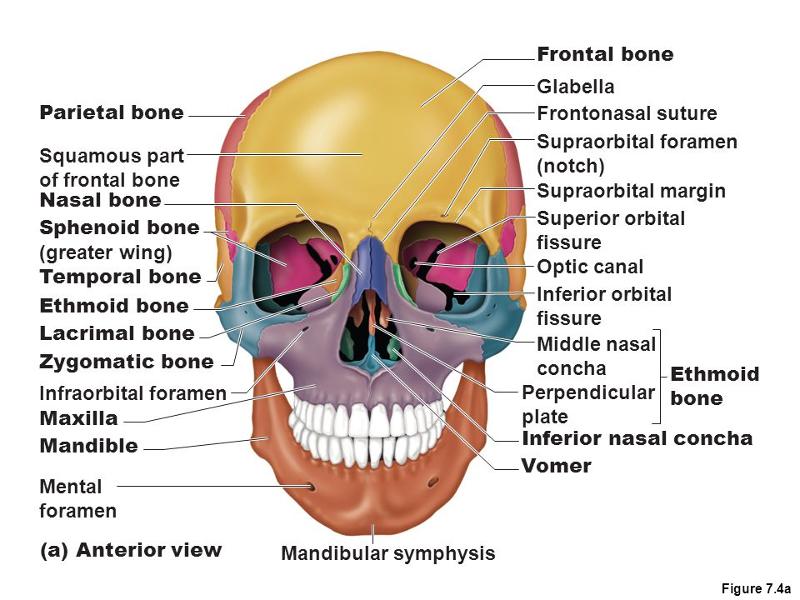
Which letter indicates the bone that forms the inferior part of the nasal septum?
a. supraorbital foramen (notch)
b. inferior orbital fissure
d. vomer
e. mental foramen
D
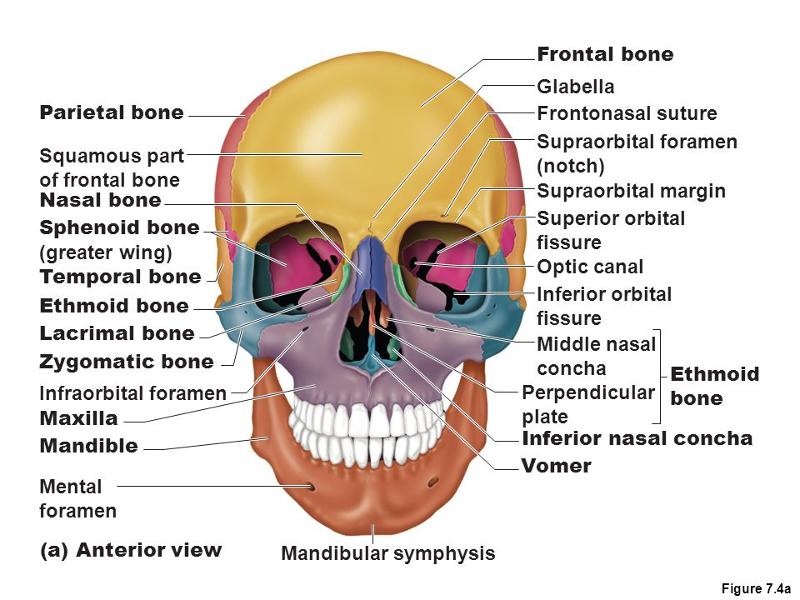
Which letter indicates the bone of the skull that has supraorbital foramen (notch)?
a. supraorbital foramen (notch)
b. inferior orbital
fissure
d. vomer
e. mental foramen
A
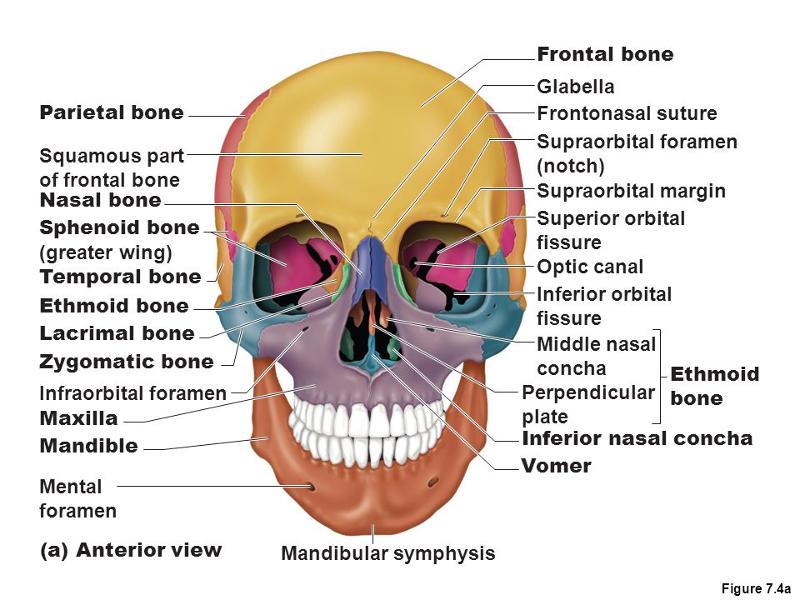
Which letter indicates the facial bone that has as inferior orbital fissure?
a. supraorbital foramen (notch)
b. inferior orbital
fissure
d. vomer
e. mental foramen
B
Which of these bones has both the cribriform plate and the crista galli?
a. mandible
b. frontal
c. parietal
d.
occipital
e. ethmoid
E
On which of these bones would the mental foramen be found?
a. mandible
b. frontal
c. parietal
d. occipital
e. ethmoid
A
Which bony landmark below is most similar to a meatus?
A) facet
B) foramen
C) groove
D) suture
B
For each vertebrae, the laminae
A) are major components of the vertebral arches.
B) are where the ribs attach.
C) lie ventral to the vertebral foramen.
D) occur in two pairs, so there are four of them.
A
All of the bony landmarks listed below are found within the orbit except the
A) superior orbital fissure.
B) inferior orbital fissure.
C) infraorbital foramen.
D) optic canal.
C
Which part of the temporal bone projects medially and contains organs of the inner ear?
A) styloid
B) petrous
C) squamous
D) zygomatic
B
The external and internal acoustic meatuses are in the ________ and ________ regions of the temporal bone, respectively.
A) squamous; mastoid
B) tympanic; petrous
C) mastoid; petrous
D) squamous; sphenoid
B
The largest paranasal sinus is the
A) frontal.
B) maxillary.
C) ethmoid.
D) sphenoid.
B
Which of the bones listed below does not have a zygomatic process?
A) frontal
B) maxillary
C) temporal
D) zygomatic
D
Which cranial bones meet at the lambdoid suture?
A) frontal and parietal
B) parietal and occipital
C) frontal and nasal
D) parietal and temporal
B
In referring to the alveolar regions of the mandible and maxillae, the alveoli are
A) glands (salivary glands).
B) tooth sockets.
C) lips.
D) the palate.
D
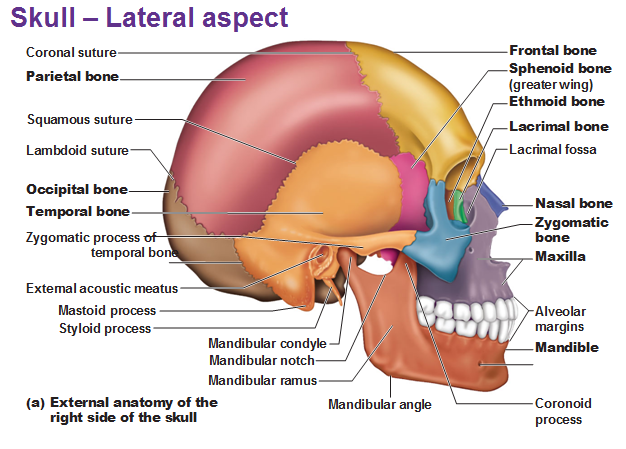
Which letter indicates the zygomatic bone?
a. coronal suture
b. mastoid process
c. styloid process
d. coronoid process
e. zygomatic bone
E
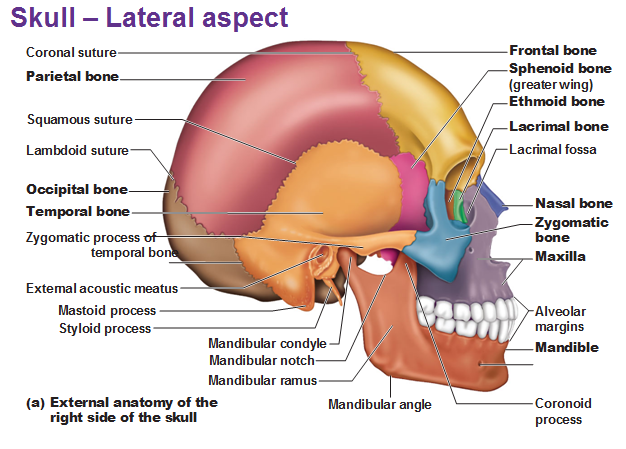
Which letter indicates the mastoid process of the temporal bone?
a. coronal suture
b. mastoid process
c. styloid
process
d. coronoid process
e. zygomatic bone
B
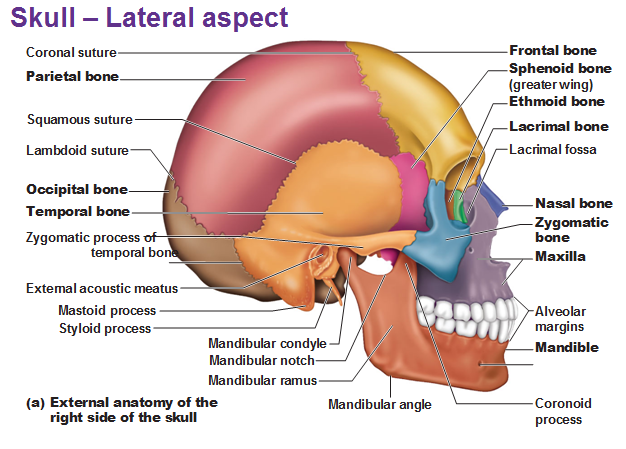
Which letter indicates the coronal suture?
a. coronal suture
b. mastoid process
c. styloid
process
d. coronoid process
e. zygomatic bone
A
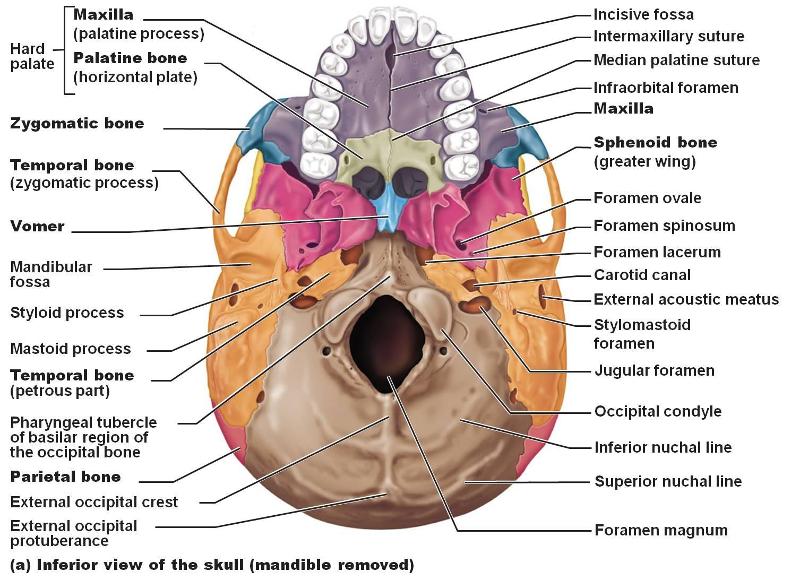
Which letter indicates the jugular foramen?
a. palatine bone
b. mandibular fossa
c. foramen magnum
d. occipital condyle
e. jugular foramen
E
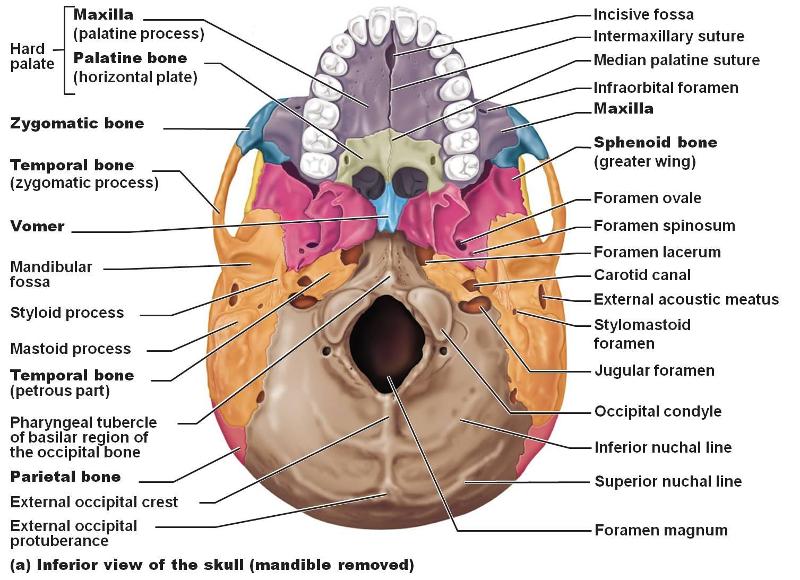
Which letter indicates the palatine bone that forms part of the hard palate?
a. palatine bone
b. mandibular fossa
c. foramen magnum
d. occipital condyle
e. jugular foramen
A
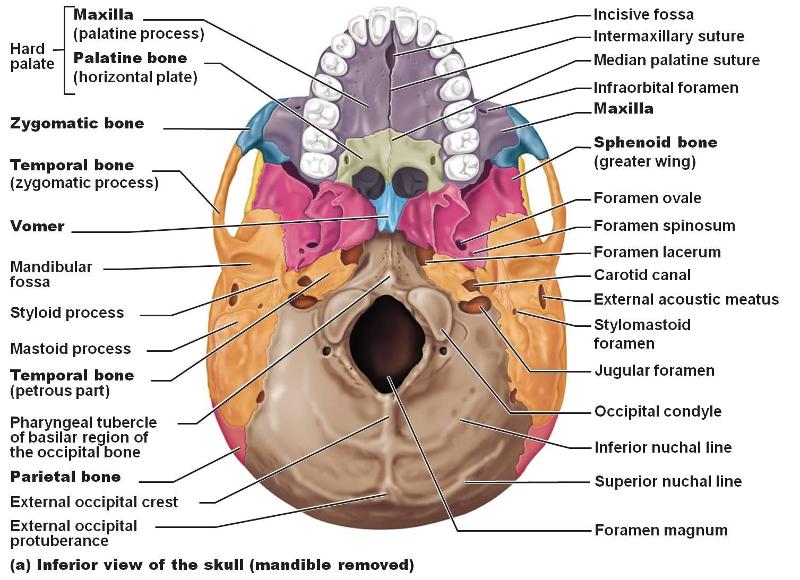
Which letter indicates the mandibular fossa of the temporal bone?
a. palatine bone
b. mandibular fossa
c. foramen magnum
d. occipital condyle
e. jugular foramen
B